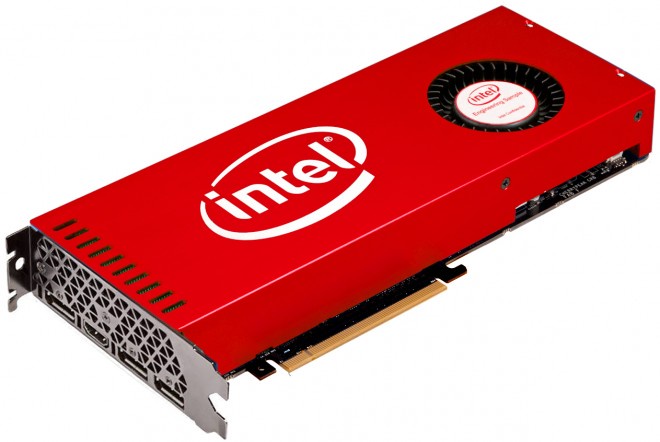Rendering and Visualization:
Engineers working on projects that involve rendering, visualization, and virtual prototyping can benefit from a powerful GPU. Real-time visualization of large datasets or complex models can be smoother and more responsive with a capable GPU.
Architecture:
Xe HPG renders slices that comprise the backbone of every GPU. Arc offerings can be scaled up as per the latest market needs. It consists of ray tracing units such as dedicated ray tracing units, rasterizers, geometry blocks, and the fundamental building block for Intel Arc, the Xe Cores.
Each of the render slices consists of four cores and ray tracing units. It also consists of advanced processors, which are needed for running modern CPUs.
Content Creation:
The Intel arc graphics offers room for multi-engine content creation. This technology performs tasks by harnessing the combined power of Intel CPU anIntel introduced the Intel Arc Pro A-series professional graphics processing units (GPUs). Typically, the Intel Arc Pro A30M GPU is for mobile form factors, and the Intel Arc Pro A40 (single slot) and A50 (dual slot) GPUs are for small form factor desktops. They offer a range of functionalities like ray tracing hardware, machine learning capabilities, and industry-first AV1 hardware encoding acceleration.
The Intel Arc GPU graphics are compatible with leading professional software applications within the architecture, engineering, construction, design, and manufacturing industries.
This GPU technology is also optimized for media and entertainment applications like Blender. Intel Arc Pro Gpus can run open-source libraries in the Intel one API Rendering Toolkit. This is widely adopted and integrated into industry-leading rendering tools.
Media and Entertainment:
Thanks, 3D ray tracing lets developers simulate the real way that light works. With this advanced graphics technology, scenes become more realistic, and even objects not in the frame can be smoothly reflected more accurately.
3D ray tracing works with algorithms and begins with a camera lens simultaneously. This ray-traced light moves outward and bounces off across all objects in its path. Furthermore, the ray tracing properties offer color and thoughtful designs. This advanced technology can also determine the appropriate light source, which can affect rays.
Product design and virtual prototyping:
Ray tracing is essential in every stage of product designing and virtual prototyping. This process starts right from designing and evaluating to creating images for sales.
Engineers and designers can use this technology to create a clear and realistic proposal design. Then manufacturers use it to build and test the product virtually using graphics simultaneously.
Animation:
Thanks to ray tracing technology, that has opened the way for numerous possibilities in the world. The process of creating animations is going to be tough day by day.
With ray tracing in animation, the need to work separately on the shadows and reflections gets eliminated. It can be performed in a single frame now.
Animation artists can use ray tracing to add fancy shadowing effects to get a realistic feel. There are numerous uses of ray tracing technology, but the most prominent ones are Beauty and the Beast, Aladdin, and Toy Story.
Construction and Mining:
The reported overclocking is 10.2 MH/s on DaggerHashimoto. It is about right when we compare the GPU to the RTX 3050. You can expect kernel optimizations and additional overclocks to make the GPU hash around 15 MH/s.
Engineering:
Ray tracing simulates the behavior of optical wavefronts through various mediums. It makes it easy to determine the quality of the rendered image for image-forming systems, the distribution of light for illuminations systems, and so on.
If you are a CAD designer or an engineer working with VR or product design, you will need to become familiar with ray tracing to fulfill the desires of ever-changing consumers.
This ray-tracing technology provides high-quality renders in the right situations. Ray tracing can even be photorealistic, but ray tracing will always provide higher-quality renders.
This offers entirely accurate images in real-time situations.
Ray tracing is likely to develop multiple real-world applications.
Computer-Aided Design (CAD):
CAD software, widely used in engineering, architecture, and manufacturing, relies heavily on GPU performance for rendering and real-time manipulation of complex 3D models. A powerful Intel arc GPU, like the ones anticipated in the Intel Arc series, could potentially enhance the user experience and workflow in CAD applications.
Simulation and Analysis:
Engineering simulations, including finite element analysis (FEA) and computational fluid dynamics (CFD), often demand significant computational power. A high-performance GPU can accelerate these simulations, leading to faster results and improved productivity.
d GPU to unleash excellent performance.
Due to Intel's hypercompute functionality, graphics technology professionals can smoothly perform tasks such as image processing, video streaming, and so on.
Bottom Line:
Intel Vpro has contributed greatly to industries such as engineering, construction, media, etc. Due to the advanced functionalities of pro GPUs, such as ray tracing capabilities and AV1 encoding, you get more than your expectations.


No comments yet